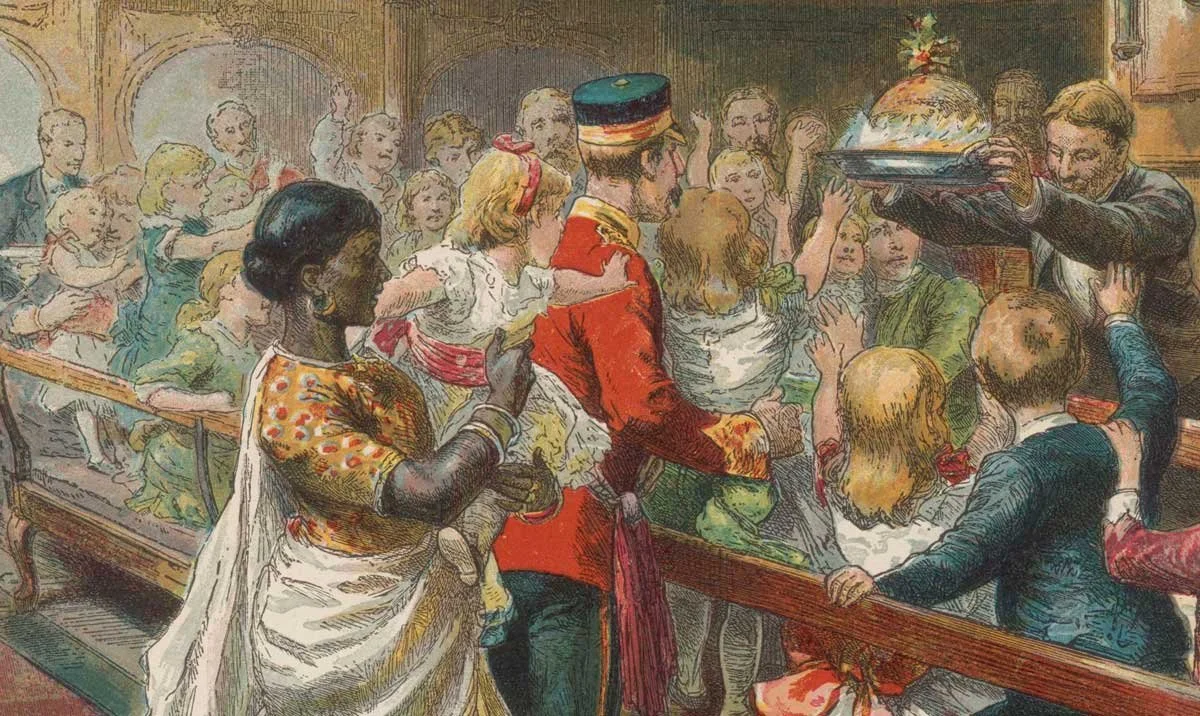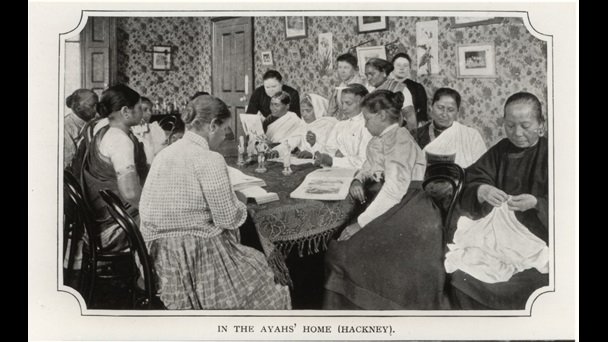Ayahs’ Home: Getting a blue plaque for Britain's forgotten women
One aspect of British Imperial history that never quite made it into my classroom is the stories of the ayahs.
Ayahs were South-Asian nannies working for colonial families, similar to amahs who were predominantly from South-East and East Asia.
Many such nannies accompanied their charges on long voyages to the UK with the promise of a return journey - only to become abandoned once on British shores. This problem became so severe that, in 1891, the first Ayahs’ Home was established in Aldgate.
Homes for ayahs were established in various locations in the UK. Image sourced via The British Library.
Moving to steadily larger premises over the next three decades, ayahs would live in homes while they waited for another British family to accompany back to India. During their stay they received strong ‘encouragement’ to convert to the Christian faith.
The brief glimpses we have of these women are extraordinary. One ayah, a Mrs Antony Pareira is thought to have made the weeks-long crossing 54 times. Another, Minnie Green, took her former employees to court in 1892 for their disrespectful and physically violent behaviour towards her – and won.
The numbers of ayahs and amahs in the UK continued to fluctuate. Ayahs’ homes tended to be busier in the summer months, as British families returned home to avoid summer temperatures overseas. And occupants soared during the First World War as women were banned from sea travel, leaving hundreds of women living in limbo for weeks or even months.
The histories of the ayahs are simultaneously inspirational and distressing, and the story of their appeal for a blue plaque deserves our attention.
Farhanah Mamoojee initially learned of the ayahs and amahs when watching A Passage to India. She decided to see the location of the first home for ayahs for herself. She was shocked to find nothing marking the site and decided that she was going to do something about it.
Farhanah set out to get a blue plaque for the first Ayahs’ Home.
Farhanah first encountered these women’s stories via on TV, so I ask what role she thinks popular media plays in sharing such lesser-known histories. “I can’t stress how important it is!” she replies. “There’s such an appetite right now for untold and hidden stories in history. [It’s] vital to create awareness on a larger scale.”
A significant challenge to uncovering these stories, however, is the sheer lack of documentation concerning minorities in Britain. Ayahs and amahs boarding ships were often given the surname of the family they worked for, so there’s no way of knowing who an ayah really was, or what happened to her next.
“It’s hard to get around this now as the damage has already been done,” says Farhanah. “Sources like photographs were usually kept with the families, not the employees. I, for example, have no idea what my grandparents did.”
“The recording of oral histories is really important in ensuring voices at all levels of society are recorded for future generations,” says Farhanah.
In fact, the spoken word has been crucial to remembering ayah history. In addition to applying for the blue plaque, Farhanah organised an event with the YoniVerse Poetry Collective performing work inspired by the Home and those who lived there.
The aim was to make the academia surrounding the stories of ayahs more accessible to the public.
“The way the research has been presented so far is quite intimidating and not made for all audiences,” she explains. “Spoken word was a fantastic way to humanise the voices of these women and give life to their experiences.”
Having worked for Sotheby’s auction house, Farhanah has extensive experience in the arts and historical sectors. How much, I ask, did this enable her to build this campaign – would it have been navigable for someone with no comparable knowledge?
“Everything I have learned or found has just been from using general resources found for free on the internet,” says Farhanah. “So yes, I would say it is definitely navigable for a complete novice. There’s no special skill set required, just genuine passion and dedication.”
“Anyone can be a ‘community activist’, and those people, like myself, are showing others what can be achieved if you put your mind to it,” says Farhanah.
It’s inspiring stuff, and thank goodness people like Farhanah are making change happen. We already knew we had a lack of representation in Britain’s statues, but according to English Heritage, only 14% of London’s blue plaques celebrate women – let alone women of colour.
The blue plaque scheme depends on public nominations, so does this mean it can be less strategic when it comes to representative and inclusive histories?
“Yes, definitely,” Farhanah agrees. “It’s also not widely advertised and, from my own experience, the application process itself is not particularly easy or straightforward. No timeline is offered, and if you weren’t particularly persistent you would easily get lost in the process.”
But, thanks to Farhanah’s persistance, English Heritage blue plaques will finally be unveiled for the Ayah’s Home in 2022, among other plaques dedicated to telling working class stories.
Farhanah believes that British Asians need to do their part to ensure their history is included in mainstream discourse. “No one is going to be like: I’m a white man and I’m going to start applying for blue plaques for South Asian women!” she says. “It’s up to us and it’s our responsibility.”
But is it also the responsibility of everyone else, including those in privileged positions, to tell more representative stories?
“Absolutely, there’s no question about it!” says Farhanah. “Everyone should be recognising their privilege and using this to properly amplify voices that aren’t always given the time of day.”
So, as Women’s History Month draws to a close, let’s all pledge to propose a blue plaque to commemorate someone underrepresented in history. It’s in our power to change the narrative.
Title image by G. Durand from The Graphic, 1889.







